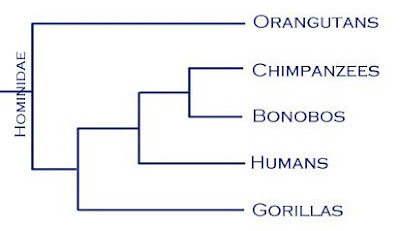Leslie Orgel, who passed away a few weeks ago, was an accomplished thinker who explored some of the biggest questions in biology, including the origin of life itself. He was also a co-author, with Francis Crick, of one of the two key “selfish DNA” papers that critiqued the tendency among many authors to assume without evidence that all non-coding DNA is functional at the organismal level. But he is perhaps best remembered for Orgel’s Rules.
Orgel’s Second Rule, in particular, is well known among biologists. It states, quite succinctly, that “Evolution is cleverer than you are”. This is not to imply that evolution has conscious motives or methods, but that most people who say that this or that could not evolve are simply exhibiting a lack of imagination.
In a previous post, I discussed a rather silly statement in a science news story about venomous snakes and their toxic frog prey. I may have been unduly harsh in shooting the messenger, as it seems that the authors of the paper themselves made the statement in question in a different interview.
To borrow from my previous post, the story can be summarized as follows. The frogs are toxic or may be covered by a sticky glue-like substance depending on the species, but the snakes manage to consume them nonetheless by killing the frog and then waiting for the objectionable substances to dry out or degrade before eating the prey. The frog usually travels some distance before succumbing to the snake’s venom, at which time the predator tracks it down and devours it. Assessing the state of non-lethal doses of toxin in their mouths after the initial bite of the frogs allows the snakes to discriminate between species of toxic prey, such that they wait, say, 30 minutes post mortem before eating one species of frogs, but 40 minutes for a different species whose toxins persist slightly longer before breaking down.
While discussing their recent publication, the authors are quoted thus:
In evolutionary terms, the snake’s strategy of ‘bite, release, and wait’ is unbeatable by the frogs. Although prey often evolve ways of overcoming predator tactics, the frogs can’t do so in this case – because the snake’s strategy only becomes effective after the frog has died. Natural selection ceases to operate on an individual after that individual’s death, so frogs will probably never evolve toxins that last longer in response to the snake’s tactic. Thus, this waiting strategy is likely to be stable and unbeatable over evolutionary time. [Emphasis added].
So, the argument is being made that because the frogs that are attacked by snakes are dead, there can be no selection on frogs that would lead to counteracting features evolving. The obvious objection to this is that the direct individual fitness of a given frog may not be increased if the toxins last longer, but that its inclusive fitness (i.e., its own reproduction plus the reproductive success of genetic relatives) would be. The authors take pains to dismiss this possibility, and note that there is no parental care or geographical concentration of kin beyond the earliest life stages. Fair enough, although I don’t think one should dismiss the possibility of more subtly biased localizations of kin without supporting data.
But assuming for the sake of argument that indeed kin selection is absent in these frogs, is there any imaginable circumstance in which the snake’s strategy could be undermined? Or is it truly “unbeatable over evolutionary time”? I suggest that there are several possibilities — and I freely accept that evolution is cleverer than I am.
Scenario #1: The frogs become even more toxic than they already are, such that even the first bite by the snake is fatal or at least detrimental. This one almost goes without saying. It seems especially obvious since the toxin appears to be there in the first place only as a defensive adaptation.
Scenario #2: The frogs become more resistant to snake venom such that the snake has to handle them for longer and be exposed to more toxin. Again, this is a simple one. It could also operate in addition to the first case.
Scenario #3: There is an increase in the longevity of the toxin such that snakes have to wait longer before eating the frogs. The snakes apparently eat several species of frogs, some of which are non-toxic. They may not even envenomate those species, and can swallow them right away. The toxic frogs, by contrast, must be struck and then the snake must wait and perhaps track them down before it can consume them. There will therefore be a threshold in at which it is not worth waiting for the toxic frog to become palatable but instead to spend time looking for non-toxic prey. The point at which a snake is better off just avoiding the toxic frogs and instead looking for non-toxic frogs will be largely dependent on two parameters: 1) how often the toxic and non-toxic frogs are encountered relative to each other, and 2) how long a snake has to wait before eating a toxic frog and how costly it is in terms of envenomating, tracking, and taste-testing it. Change either of these and the snake population may evolve to simply avoid toxic frogs. Both could be affected by changes in the frog population, such as if individual frogs behave in such a way as to be less frequently encountered by snakes (this would be favoured for obvious reasons), or if the toxin of many individuals takes longer to break down (which increases the average cost per frog as experienced by the snakes).
Scenario #4: A mutation appears that makes the toxin longer lasting but no more costly to produce, and is associated with something (e.g., taste or some other indicator) that the snakes can detect before biting the frogs. In this case, the snakes could learn to avoid the longer lasting toxic frogs (or there could be selection on innate tendencies to avoid certain cues in frogs). The snakes would then focus on non-toxic frogs or toxic frogs that are edible more quickly following death. This would impose selection on the frog population for longer lasting toxin.
I welcome more suggestions, and I repeat Orgel’s caution against making universal claims about what evolution can or can’t do.
______________
More possibilities (see comments thread for credits)…
Scenario #5: Frogs exhibit phylopatry such that relatives are concentrated into reasonably localized distributions — not kin groups per se, but a non-random distribution such that kin are more likely to be close to one another than to non-relatives in general. This would not be kin selection in the sense that the authors dismiss, but it could result in inclusive fitness effects on selection in favour of long lasting toxin alleles. In other words, long lasting toxin genes could be favoured if it deters snakes from attacking frogs in a specific region and that region is occupied primarily by relatives of the long lasting dead frog who share the same toxin genotype.
Scenario #6: Frogs normally live within closed geographic areas, and each subpopulation varies in its overall frequency of long lasting toxin alleles. Groups with lots of these long-lasting toxic frogs would be preyed upon less by snakes (assuming the snakes can tell the difference and focus instead on hunting in areas where there are fewer long lasting toxic frogs). This would favour the long lasting toxin even if not all members of the group have it. If there is infrequent admixture of subpopulations, and the groups with more long lasting toxic frogs contribute more offspring to the metapopulation, then this could be favoured locally and spread throughout.
Scenario #7: The frogs may be preyed on by another species of snake that does not exhibit the bite-release-eat tactic and evolve longer lasting toxins in response to that other interaction, which indirectly affects the snakes that do display the behaviour.

 319,000 human ERV LTR regions have a near-perfect p53 DNA binding site. The LTR10 and MER61 families are particularly enriched for copies with a p53 site. These ERV families are primate-specific and transposed actively near the time when the New World and Old World monkey lineages split. Other mammalian species lack these p53 response elements. Analysis of published genomewide ChIP data for p53 indicates that more than one-third of identified p53 binding sites are accounted for by ERV copies with a p53 site. ChIP and expression studies for individual genes indicate that human ERV p53 sites are likely part of the p53 transcriptional program and direct regulation of p53 target genes. These results demonstrate how retroelements can significantly shape the regulatory network of a transcription factor in a species-specific manner.
319,000 human ERV LTR regions have a near-perfect p53 DNA binding site. The LTR10 and MER61 families are particularly enriched for copies with a p53 site. These ERV families are primate-specific and transposed actively near the time when the New World and Old World monkey lineages split. Other mammalian species lack these p53 response elements. Analysis of published genomewide ChIP data for p53 indicates that more than one-third of identified p53 binding sites are accounted for by ERV copies with a p53 site. ChIP and expression studies for individual genes indicate that human ERV p53 sites are likely part of the p53 transcriptional program and direct regulation of p53 target genes. These results demonstrate how retroelements can significantly shape the regulatory network of a transcription factor in a species-specific manner.

